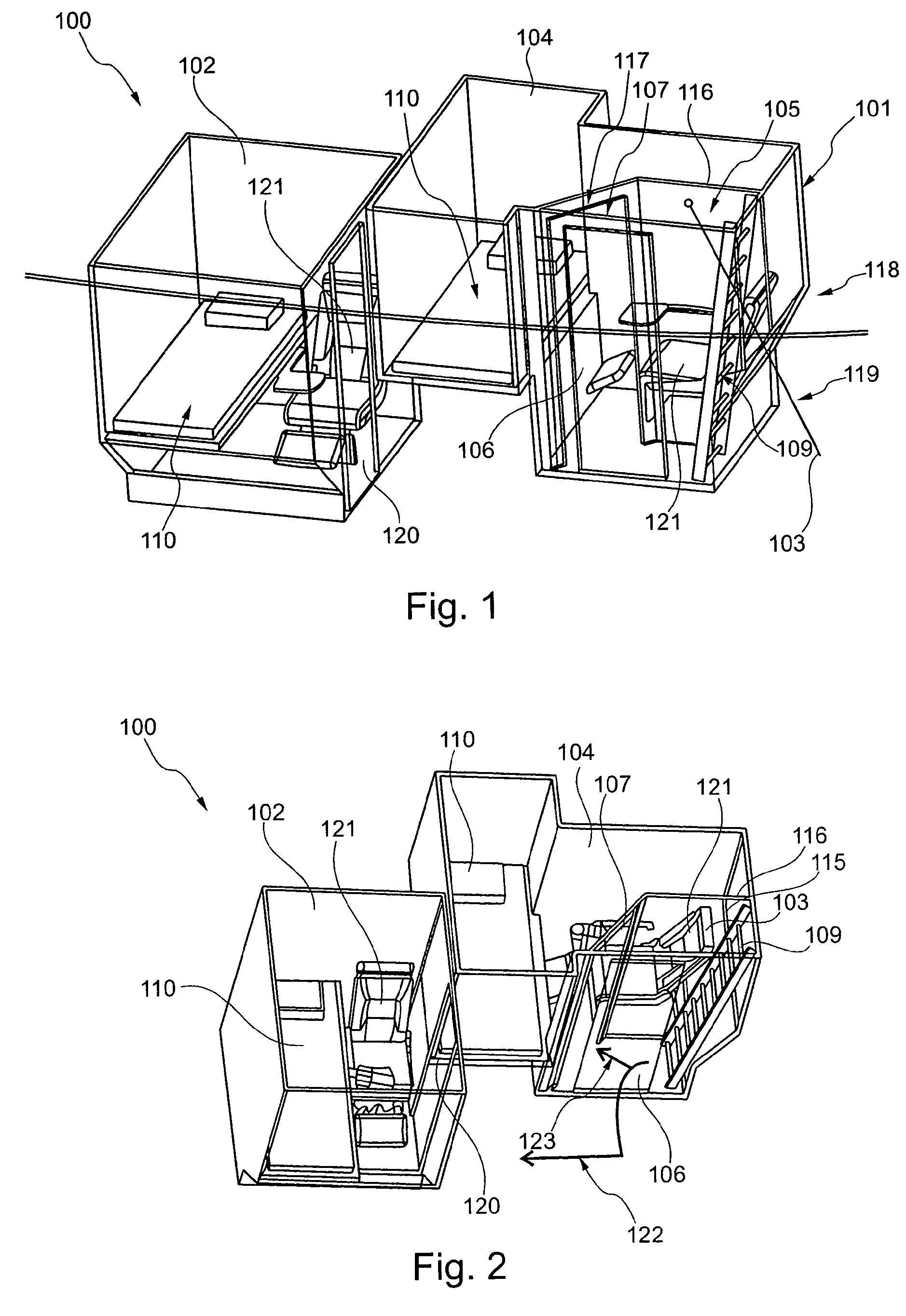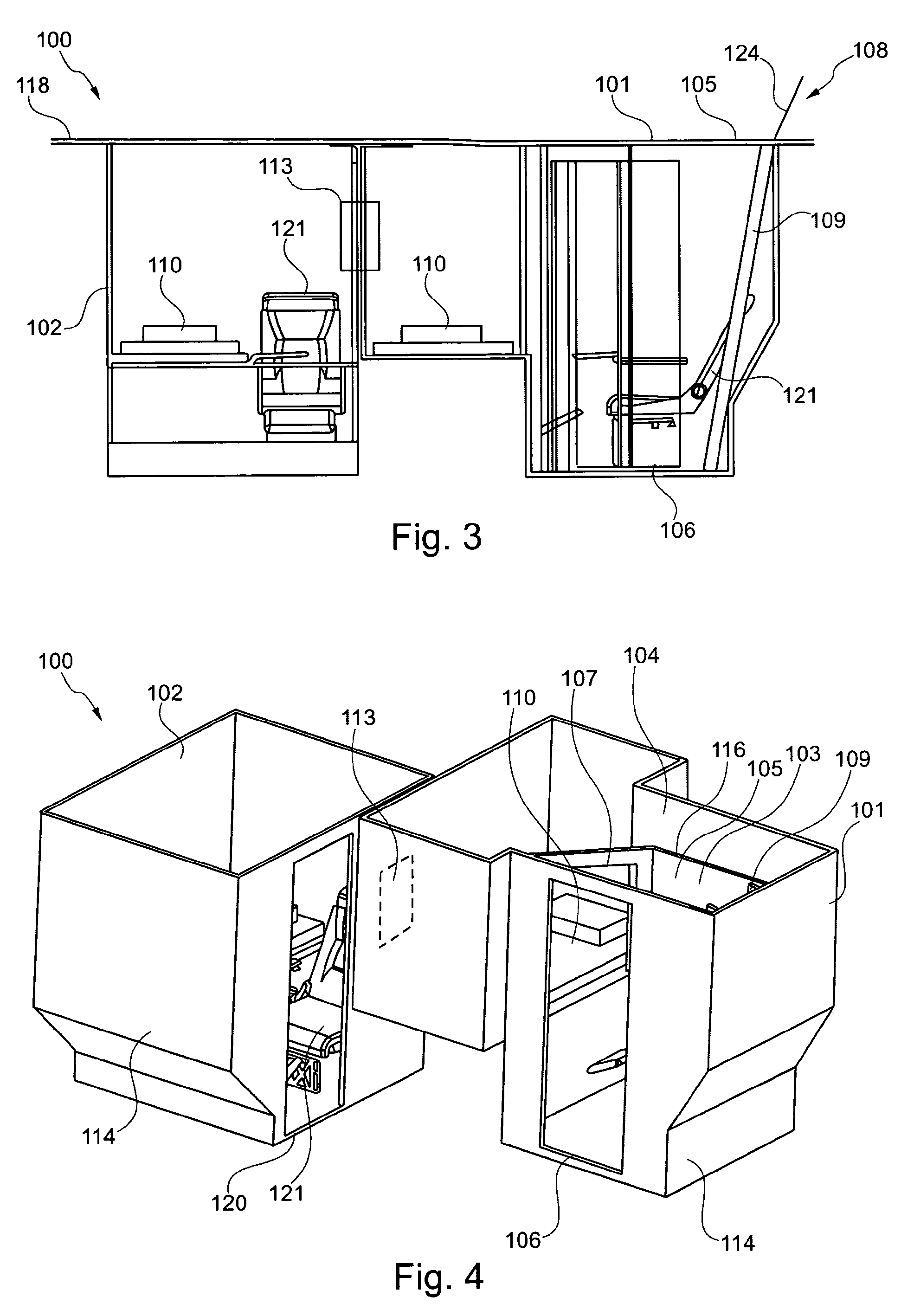Rest module with a first partial module with direct access to a possible second partial module
a technology of partial modules and rest modules, applied in the field of rest modules, can solve the problems of not being optimally designed in the sense of room and space configuration, not offering the full technical height over the whole area, and the so-called first class area is commonly very commodious and spatially wide, so as to achieve the effect of improving the rest of the crew
- Summary
- Abstract
- Description
- Claims
- Application Information
AI Technical Summary
Benefits of technology
Problems solved by technology
Method used
Image
Examples
Embodiment Construction
[0070]Similar or relating components in the several figures are provided with the same reference numerals. The view in the figure is schematic and not fully scaled.
[0071]FIGS. 1, 2 and 4 illustrate schematic views of exemplary embodiments of the present invention. A shown rest module 100 comprises a first partial module 101 and a second partial module 102, while the first partial module is spatially divided by a wall 116. This wall creates a first section 103 and a second section 104. The wall 116 further on offers a door 117 that guarantees an access from the first section of the first partial module into the second section. All together the first section comprises three openings, the first opening 105, the second opening 106 and the third opening 107. The first opening 105 is an opening that leads to an above-located area of the aircraft 108. This area is only indicated by the floor of the above-located area 118. The first opening 105 therefore is an opening in the floor of the ab...
PUM
 Login to View More
Login to View More Abstract
Description
Claims
Application Information
 Login to View More
Login to View More - R&D
- Intellectual Property
- Life Sciences
- Materials
- Tech Scout
- Unparalleled Data Quality
- Higher Quality Content
- 60% Fewer Hallucinations
Browse by: Latest US Patents, China's latest patents, Technical Efficacy Thesaurus, Application Domain, Technology Topic, Popular Technical Reports.
© 2025 PatSnap. All rights reserved.Legal|Privacy policy|Modern Slavery Act Transparency Statement|Sitemap|About US| Contact US: help@patsnap.com



